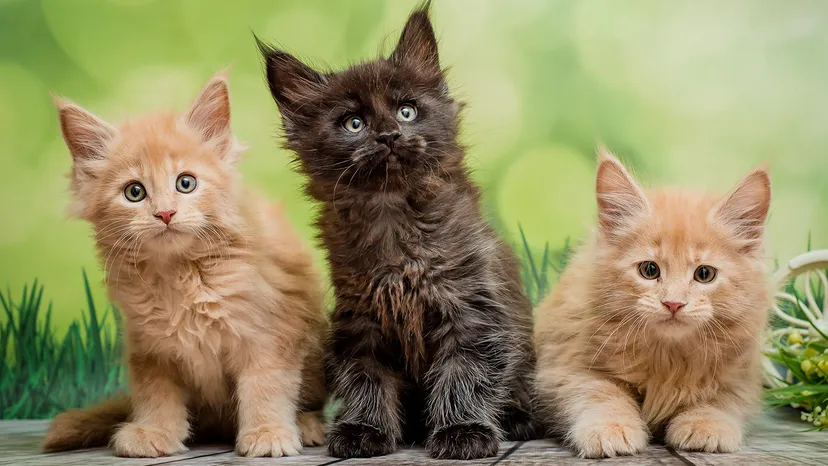Introduction: The Charm of the Cat
Elegant, curious, independent, and sometimes hilariously dramatic — cats have captured human hearts for thousands of years. From ancient temples in Egypt to modern apartments in New York, cats have shared their lives with us not as pets, but as companions with personality and grace.
Whether you’re a long-time cat lover or thinking about adopting one, understanding a cat’s world — from their behavior to their needs — is key to a happy, healthy relationship.
A Brief History: From Wild Hunters to Household Icons
Cats were first domesticated over 9,000 years ago, likely in the Middle East, where they helped protect grain stores from rodents. Over time, their independence, cleanliness, and mysterious aura made them beloved companions.
In Ancient Egypt, cats were worshipped and even mummified. In other cultures, they were believed to bring luck or, unfortunately, bad omens. Today, cats are one of the world’s most popular pets — with over 600 million domesticated cats globally.
Cat Behavior: Understanding the Feline Mind
Cats are complex creatures with distinct personalities. While often seen as aloof or solitary, many are affectionate, playful, and deeply bonded with their humans.
Common Cat Behaviors:
- Purring: Usually a sign of comfort or affection — but can also be used for self-healing.
- Kneading (“making biscuits”): A leftover behavior from kittenhood that shows trust and happiness.
- Tail flicking: Can signal excitement, irritation, or intense focus.
- Hiding: Often a sign of stress, fear, or simply a need for quiet space.
- Chirping or trilling: A friendly sound, often directed at humans or birds through the window.
Are Cats Really Independent?
Yes — but they’re also social. Cats enjoy interaction on their terms and form deep attachments to their homes, routines, and chosen humans.
Feeding Your Cat: Diet Matters
Cats are obligate carnivores, meaning they must eat meat to thrive. They need specific nutrients like taurine, arachidonic acid, and vitamin A, which only come from animal sources.
A Balanced Cat Diet Includes:
- High-quality wet or dry food (preferably vet-approved)
- Fresh, clean water always available
- Occasional cooked meats or cat treats (no spices or bones)
Foods to Avoid:
- Chocolate
- Onions and garlic
- Alcohol
- Caffeine
- Dairy (many cats are lactose intolerant)
- Raw fish or bones
Cat Care: Daily Needs and Hygiene
Cats are naturally clean animals, but they still need your care and attention.
Daily/Weekly Cat Care:
- Litter box: Clean it daily; cats are sensitive to dirty litter.
- Grooming: Short-haired cats may groom themselves, but long-haired breeds need brushing.
- Vet visits: Regular check-ups, vaccinations, and flea/worm treatments.
- Scratching posts: Essential for claw health and to save your furniture.
Mental & Emotional Care:
- Toys & playtime: Stimulate their natural hunting instincts.
- Safe spaces: Cats love nooks, windowsills, or high shelves to rest and watch.
- Affection: Petting, talking, or simply sitting nearby helps build trust.
Cats and Humans: A Special Bond
Cats may not jump with joy like dogs, but their affection is deep and real. Studies show cats can:
- Recognize their owner’s voice
- Sense emotions like sadness or anxiety
- Provide emotional support through touch and presence
- Even improve mental health and reduce stress
Owning a cat is proven to lower blood pressure and improve overall happiness — their quiet company is often the best therapy.
Thinking of Adopting a Cat? Here’s What to Know
- Adopt from a shelter or rescue group whenever possible
- Consider your lifestyle: some cats are more active, others more relaxed
- Prepare your home with essentials: food, water, litter box, carrier, and toys
- Give them time to adjust — trust with a cat is earned, not demanded
Conclusion: A Life with Cats Is a Life Enriched
Cats are more than pets — they’re companions full of mystery, comfort, and personality. Whether they’re zooming around the house at midnight, curling up on your lap, or silently watching the world from a windowsill, cats add magic to our lives.
Final Thought:
“A cat may not speak your language — but it speaks to your soul. Quietly, wisely, and with a purr.
